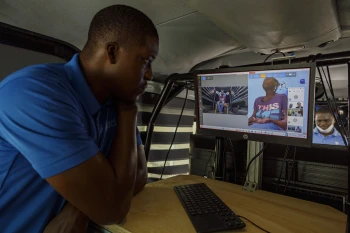In a world where healthcare disparities remain a pressing issue, emerging technologies are poised to transform the landscape. One of the most promising advancements is the rise of 3D technology, which is set to bring surgeons closer to patients in Africa’s most remote regions. With healthcare access often limited by geographical barriers and resource constraints, this innovation could bridge the gap between urban medical facilities and rural populations in need.
The Promise of 3D Technology
3D technology encompasses a range of applications, including 3D printing, imaging, and visualization tools. In the medical field, these technologies have already begun to make remarkable contributions, particularly in surgical planning and education. Surgeons can now create precise anatomical models from patient data, allowing for better visualization and preparation for complex procedures. For remote locations in Africa, where access to specialists may be scarce, this technology holds the potential to substantially enhance surgical outcomes.
3D Printing: A Game Changer for Resources
One of the most transformative aspects of 3D technology is in the realm of 3D printing. This technology can produce a variety of medical supplies, from surgical instruments to prosthetics, on-demand and at a fraction of the traditional cost. In many African countries, hospitals and clinics often struggle with supply shortages. For example, a 2021 study published in The Lancet revealed that over 60% of healthcare facilities in sub-Saharan Africa faced critical shortages of essential surgical tools.
By employing 3D printing, these facilities can create their own tools, tailored to their specific needs. This not only ensures that surgeons have the necessary equipment but also reduces dependency on international supply chains that can be disrupted due to various factors, including political unrest and logistical challenges.
Virtual Reality for Training and Consultation
Another significant application of 3D technology is in training and virtual consultations. Surgeons in urban centers can utilize virtual reality (VR) to conduct remote training sessions for healthcare professionals in rural areas. This is particularly crucial given the shortage of trained surgeons in many African nations. According to the World Health Organization, there is an estimated shortage of 2.4 million healthcare workers across the continent.
With VR and 3D anatomical models, experienced surgeons can guide rural practitioners through complex surgical techniques in real-time, thus enhancing skill sets without the need for physical presence. This not only boosts the competence of local healthcare providers but also builds confidence in them to carry out surgical interventions that were previously thought too risky.
Enhanced Patient-Centric Care
3D technology also promises to enhance patient-centric care by facilitating better communication between surgeons and patients. 3D printed models allow patients to visualize their medical conditions, leading to improved understanding and informed decision-making. In regions where medical literacy may be low, this can play a crucial role in ensuring that patients understand their surgical options and the implications of each procedure.
Future Challenges and Opportunities
While the potential benefits of 3D technology in improving surgical care in remote African regions are immense, challenges remain. Access to electricity, internet connectivity, and technical expertise are critical hurdles that need addressing. However, innovative partnerships between governments, NGOs, and tech companies can provide solutions. Initiatives like the USAID Global Health Initiative illustrate that with the right support, these barriers can be lowered.
Conclusion
The integration of 3D technology into surgical practices holds promise for closing the healthcare gap in Africa’s remote areas. By enabling better resource management, enhancing medical training, and improving patient engagement, this innovative technology could pave the way for a revolutionary shift in surgical care. As we stand on the brink of this transformation, it is imperative to foster an environment that supports the development and deployment of 3D solutions, ensuring that every patient, regardless of their location, receives the care they deserve.
Email Us on editorial@nnafrica.com













